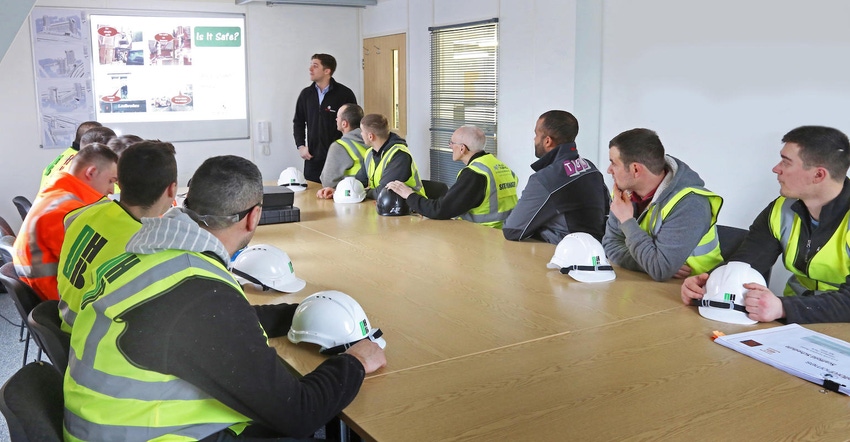6 Safety Leadership Skills Essential for Successful Jobsites
Implementing safety leadership tactics can increase productivity, boost morale and improve worker retention—all while helping to minimize injuries and fatalities.

An effective safety strategy for a construction company of any size involves the participation of all employees, especially those in leadership and supervisory positions. According to the Foundations for Safety Leadership training program by CPWR—The Center for Construction Research and Training, there are six essential safety leadership skills needed to keep a jobsite and construction workers safe.
Dr. Bradley Evanoff and Anna Kinghorn, of Washington University in St. Louis School of Medicine Healthy Work Center, hosted a CPWR webinar in the spring to expand on these six critical skills and how to implement them in your own construction company.
“A lot of foremen and other jobsite leaders are experts at production,” said Evanoff. “They know the rules of safety, but they’ve had little to no formal training in how to lead a crew.”
According to the pair, the benefits of effective safety leadership include increased morale, reduced hazards, fewer injuries and fatalities, a better business reputation, more productivity, better quality of work and better worker retention, among others.
Here are the six key safety leadership skills to remember when conducting on a construction jobsite:
1. Lead by example.
Establish safety expectations as a core value and share them with team members and anyone doing work on the jobsite. Demonstrate a positive attitude about safety and set a good example both for direct reports and those you report to.
2. Engage and empower team members.
Encourage employees and subcontractors to identify and act upon unsafe situations by reporting hazards and safety concerns, providing solutions, reporting near misses and stopping work if necessary.
3. Actively listen.
Hear what team members are saying and treat them with respect when they’re speaking. Pay attention to nonverbal clues and ask clarifying questions when necessary.
It’s also important to listen to hear what’s being said, rather than listening to come up with a response as they’re speaking.
4. Practice three-way communication.
Be direct and concise and ensure you have the listener’s attention. Ask the team member to repeat the message they heard from you and clarify any misunderstandings before moving on.
5. Develop team members through teaching, coaching and feedback.
Respectfully watch and coach workers while on the job. If correction is needed, watch the learner fix the situation or perform the task to make sure it’s done correctly and safely instead of doing it for them. When addressing possible safety issues, focus on the potential consequences rather than on the team member and their actions or inactions.
6. Recognize team members for a job well done.
This can be done privately or publicly but should consider the preferences of the individual. Acknowledge them when they are going above and beyond when it comes to safety.
About the Author(s)
You May Also Like




